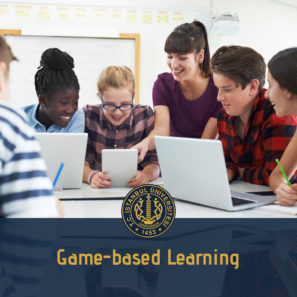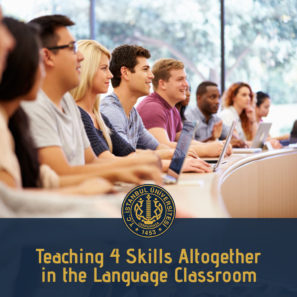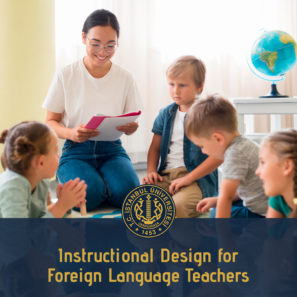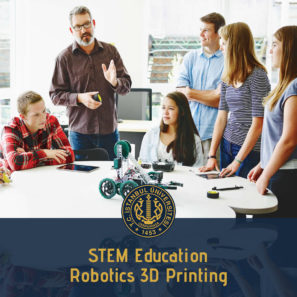Preparatıon:
The participants of the course are invited to participate in practice based exploration and design activities throughout the sessions. Exchange of best practices as well as the group presentation of the collaboratively designed CLIL tasks that aim the development of different skills and subject areas at varying levels will be among the requirements of the course. The participants might find it useful to read some of the below listed reading material before joining the training as well:
- Cenoz, J., Genesee, F., & Gorter, D. (2014). Critical Analysis of CLIL: Taking Stock and Looking Forward. Applied Linguistics, 35(3), 243-262.
- Coyle, D. (2013). Listening to learners: an investigation into ‘successful learning’ across CLIL contexts. International journal of bilingual education and bilingualism, 16(3), 244-266.
- Coyle, D., Hood, P., & Marsh, D. (2010). CLIL: Content and language integrated learning. Cambridge: Cambridge University Press.
- de Zarobe, Y. R. (2013). CLIL implementation: from policy-makers to individual initiatives. International journal of bilingual education and bilingualism, 16(3), 231-243
- Harris, J., & Ó Duibhir, P. (2011). Effective language teaching. A synthesis of research. Dublin: National Council for Curriculum and Assessment.
Course descrıptıon
Considered a milestone for differentiated education, Content and Language Integrated Learning offers a creative space for teaching and learning of languages through the mediation of subject area knowledge gained in fields/lessons such as geography, mathematics, science, etc. and vice versa. The fundamental principle of CLIL is that there is an integration between using language to learn and learning to use language through the development of content (Coyle et.al.,2010). While CLIL has the potential to turn any content lesson into meaningful language practice when used effectively, designing and implementing CLIL courses can take time and energy on the part of the teachers, particularly if they don’t have the experience and know how on where to start .
This course allows participants to get to know, experiment and practice CLIL with a practical focus on the most innovative aspects of it- in a safe and truly international learning environment, through discussing and sharing best practices with fellow teachers and education staff from across Europe. The activities suggested pursue The European Framework for CLIL Teacher Education guidelines and terminology. With its highly interactive and practice-based structure, the course aims to provide concrete examples, ideas and tools to inspire and support educators in their lesson design for a CLIL approach.
Methodology
The training takes on a highly practical and participative perspective with hands-on approach that comprises an examination of CLIL practices, design of real world tasks as CLIL resources and collaborative thinking/evaluation routines on how to prepare a good CLIL lesson. We embrace collaboratively working methods that foster mutual learning and cooperation among participants. The focus of the training is on learning in an interactive and international environment applying knowledge of task types and task design to the real contexts and/or in the classroom. A wide array of pedagogical methods based upon experiential training, group and peer activities, learning-by-doing and best practices’ exchange are employed throughout the course.
Learnıng Outcomes
This course aims to provide teachers, education staff and language practitioners with the much needed know-how to design and implement CLIL activities the classroom. Therefore, upon successful completion of the course, the participants will be able to:
- Get acquainted with the main components and tenets of a CLIL approach to teaching language;
- Articulate the reasons that an increasing number of institutions are implementing CLIL as the bilingual methodology of choice.
- Identify and utilize (when needed) the application settings (scope) for CLIL programs.
- Detail the fundamental principles for adapting subject content to CLIL.
- Develop and demonstrate practical, baseline CLIL teaching skills.
- Plan and develop practical CLIL lessons.
- Exchange good practices and discuss challenges with fellow colleagues and the course trainers.
Follow-up
The participants will be required to develop and share their own CLIL lesson scenario, to be followed by a structured feedback session. Additionally, given a chance to network with individuals and organizations working in the education field in Europe through everyday cooperation and team-building activities, the participants might further their practice on CLIL by extended experience sharing sessions.
Specıfıcs
The training addresses teachers, teacher educators, language planning officers, advisors and research staff in the field of applied linguistics, foreign language acquisition and CLIL education. This standard indicative daily programme might be personalized on participants’ needs and professional profiles. Networking, preparation and team build up activities to be located on the first day; and follow up, specific needs and cultural activities on the last day.
Course Venue
Istanbul University – Cerrahpaşa Continuing Education Center
Course Date
| Date | Course Times | Course Content |
| Day1 |
|
|
| Day2 |
|
|
| Day3 |
|
|
| Day4 |
|
|
Game-based
INSTRUCTORS
Program Coordinator
Instructors
The number of partIcIpants
5 – 15 participants
CertIfIcate
Digital certificate.
Type of EducatIon - Place
Face to Face or Distance Education
PAYMENT
You can choose one of the following payment methods EFT and Credit Card.
BANK ACCOUNT INFORMATION
Euro Account
Banka Adı (Bank Name): TC Halk Bankası
Şube Adı (Branch Name): Cerrahpaşa
Hesap No (Account ): 0058 1000 60
SWIFT: TRHBTR2A
Explanation: İstanbul Üniversitesi Cerrahpaşa Sürekli Eğitim MerkeziEUR İBAN: TR51 0001 2001 5300 0058 1000 60
İlgili ürünler
Erasmus+ KA1 Courses
Erasmus+ KA1 Courses
Erasmus+ KA1 Courses
Erasmus+ KA1 Courses
Erasmus+ KA1 Courses
Erasmus+ KA1 Courses
Erasmus+ KA1 Courses
Erasmus+ KA1 Courses









